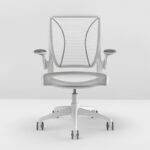Breast biopsies are crucial for determining whether a suspicious lump or abnormality is benign or cancerous. Among the various biopsy techniques, MRI-guided breast biopsy stands out as a precise and minimally invasive option. This article delves into the details of Why Mri-guided Breast Biopsy is performed, its benefits, risks, and what to expect during the procedure.
What is MRI-Guided Breast Biopsy?
An MRI-guided breast biopsy uses a powerful magnetic field, radio waves, and a computer to locate breast abnormalities and guide a needle to collect a tissue sample for microscopic examination. Unlike some imaging techniques, it doesn’t use ionizing radiation and typically leaves little to no scarring. This method is particularly useful when abnormalities are difficult to visualize with other imaging techniques like mammography or ultrasound.
Why Choose MRI-Guided Breast Biopsy? Common Uses
MRI-guided breast biopsy is valuable in specific scenarios. Doctors may recommend it when:
- Suspicious mass not identified by other imaging: MRI can detect abnormalities that may be missed by mammography or ultrasound.
- Area of distortion: If an area of the breast tissue appears distorted on an MRI scan, a biopsy can help determine the cause.
- Area of abnormal tissue change: If there’s an unusual change in breast tissue detected on MRI, a biopsy is needed to evaluate the nature of the change.
The primary reason to opt for an MRI-guided breast biopsy is its enhanced ability to target and sample abnormalities that are best seen on MRI. This includes certain types of lesions or those located in challenging areas of the breast.
Preparing for the Procedure
Proper preparation ensures the accuracy and safety of the MRI-guided breast biopsy. Here are key steps to follow:
- Inform Your Doctor: Discuss any health problems, recent surgeries, and potential pregnancy with your doctor.
- Medications: Inform your doctor about all medications you’re taking, including aspirin, blood thinners, and herbal supplements. You may need to stop taking these several days before the procedure to minimize bleeding risk.
- Allergies: Disclose any allergies, especially to anesthesia or contrast materials like gadolinium.
- Eating and Drinking: Guidelines vary, so follow your doctor’s specific instructions regarding food and drink before the MRI.
- Clothing and Jewelry: Wear loose, comfortable clothing and leave jewelry at home. You may be asked to wear a gown.
- Transportation: If you will be sedated, arrange for someone to drive you home after the procedure.
Preparing for an MRI examination often involves changing into a gown and removing metallic objects.
What to Expect During the Procedure
During an MRI-guided breast biopsy, you’ll typically lie face down on a movable examination table. The affected breast is positioned into an opening in the table. An intravenous (IV) line will be inserted to administer a contrast material, usually gadolinium, to enhance the MRI images.
The breast is gently compressed between two plates, similar to a diagnostic MRI. The radiologist uses computer software to measure the position of the lesion and calculate the precise needle placement.
A local anesthetic is injected into the skin and deeper into the breast to numb the area. A small nick is made in the skin, and the biopsy needle is inserted, guided by the MRI images. You might feel some pressure during this process.
Tissue samples are collected using a vacuum-assisted device (VAD). This device uses suction to pull tissue into the needle. Several samples are typically taken to ensure accurate analysis. After sampling, the needle is removed, and pressure is applied to stop any bleeding. A small marker may be placed at the biopsy site for future reference. The skin opening is covered with a dressing; no sutures are needed.
The entire procedure usually takes about 45 minutes.
Benefits of MRI-Guided Breast Biopsy
MRI-guided breast biopsy offers several significant advantages:
- Minimally Invasive: It is less invasive than surgical biopsy, resulting in minimal or no scarring.
- No Radiation: MRI does not use ionizing radiation, making it a safer alternative to some imaging techniques.
- Accuracy: MRI provides excellent visualization, allowing for precise targeting of abnormalities.
- Efficiency: The procedure is relatively quick and allows for a faster recovery compared to surgery.
- Vacuum-Assisted Biopsy: The vacuum-assisted device allows for multiple samples to be taken with a single needle insertion.
Risks and Limitations
While MRI-guided breast biopsy is generally safe, some risks and limitations exist:
- Bleeding and Hematoma: There’s a small risk of bleeding and hematoma formation (blood collection) at the biopsy site.
- Discomfort: Some patients may experience discomfort during or after the procedure, which can usually be managed with over-the-counter pain relievers.
- Infection: Any procedure that penetrates the skin carries a risk of infection, although this is rare.
- Lung Collapse: In rare cases, the needle could pass through the chest wall, potentially causing a lung collapse.
- Inconclusive Results: There’s a chance the procedure may not provide a definitive diagnosis, requiring further investigation.
- Contrast Allergies: Although rare, allergic reactions to gadolinium contrast can occur.
Understanding the Results
A pathologist examines the tissue samples under a microscope to determine if the cells are benign or cancerous. The results are typically shared with you by the radiologist or your referring physician.
Follow-up exams may be necessary to further evaluate any potential issues or to monitor changes over time. Your doctor will explain the need for any follow-up appointments.
Conclusion
“Why MRI-guided breast biopsy?” Because it offers a precise, minimally invasive approach to diagnosing breast abnormalities that are best visualized with MRI. While it’s essential to be aware of the potential risks and limitations, the benefits of this technique often outweigh them. If your doctor recommends an MRI-guided breast biopsy, understanding the procedure and its advantages can help alleviate anxiety and ensure you’re well-informed about your breast health.
